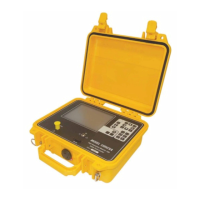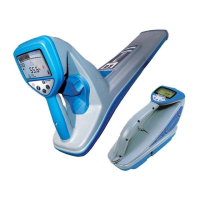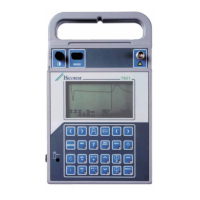PCMx Operation Manual
© 2021 Radiodetection Ltd 31
Another service was found to be close to the new pipeline in
Section B and had a small amount of current flowing in the
opposite direction. This had a cancellation effect, which
caused the current on the new pipeline to fall.
Figure 7.13 illustrates this effect.
Fig. 7.13: Interpretation
Example 3
Fig. 7.14: Angled Pipes
This example (Figure 7.14) demonstrates a survey on new
pipeline where the current on one side of the transmitter
flowed away from the transmitter.
The PCM Transmitter was connected and a 1 Amp current
selected.
A reading of 900mA was detected on one side with the
arrows pointing towards the transmitter.
The other side gave a poor Peak and Null with the current
pointing away from the transmitter.
Another reading was taken further away from the
transmitter with the same result.
It was found that another service was shorted to the
pipeline as shown and at some stage ran parallel to the
new pipeline. The current on the new pipeline had no effect
as it was so small compared to this other service.
Example
4
Locating bonding cables between new and old pipelines by
moving PCM Transmitter to both ends of a new
transmission pipeline that had an older discarded pipeline
running parallel and about 3m (10’) away. Figure 7.15.
Fig. 7.15: Parallel Pipes
The PCM Tx was connected at a rectifier and a current
measurement of 800 mA confirmed the direction to follow.
At a distance of about 3km (2 miles) from the transmitter,
two readings were obtained, 300mA on the new pipeline
and 100mA on the old pipeline. The PCM current arrows
pointed towards the PCM Tx indicating that somewhere
within the 3km/2 miles the new pipeline had been bonded
to the old pipeline.
Fig. 7.16: Parallel Pipes
The Tx was then connected to the other end of the new
pipeline and measurements taken at exactly the same
positions. A reading of 800mA was detected on the new
pipe, but there was no reading on the old pipeline.

